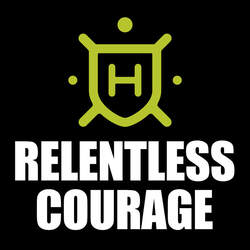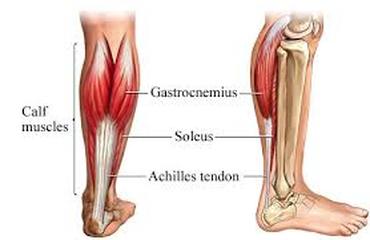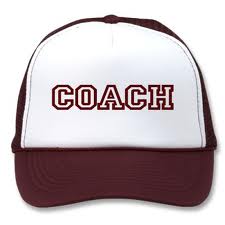5 Strategies to Overcoming Tight Calves During Training Let me start by saying that everyone is going to respond differently and all situations are unique in and of themselves. I was just asked the question, “For the past few weeks my calf muscle has hurt starting at 1-1.5 miles and then just keeps hurting (like a tightness, aching). I've been resting the past few weeks, icing, stretching. I just went for another run and same thing. I'm feeling super frustrated. Any suggestions?” Thank you for the question, Sam. I have dealt with similar issues in the past few years and have tried a number of things to overcome it. Some methods have been successful and some not so much. I’ll share with you 5 strategies that have worked for me and my clients to overcome tension in your calves during training: 1. Hydration – I’ve experienced it and seen it with many athletes when transitioning seasons from a cooler temperature to a warmer temperature. As the temp increases so does the amount we sweat. While the amount of water you drink is unique to you, the fact that you should drink more when it gets hotter is universal. 2. Active vs Passive Stretching – Do not stretch before you run! It’s ok to loosen up by moving through various ranges of motion, but holding a stretch for 20 seconds or 30 seconds will shut the nervous system down and prevent the muscle from working properly. I don’t believe in passive stretching ever during training and any time I have in the past, it has worked against me. Instead, move your joints through full range of motion slowly and deliberately, hold for maybe 2 seconds and back off slowly. Do not bounce or be violent with your stretching routine, but unless you’ve been prescribed static stretching by a Physical Therapist to treat a diagnosed injury, avoid it. 3. Foam Rolling – Every runner should have a foam roller. There are a number of ways to use them but one is to self–inflict a serious amount of pain. On an off day, go for a short walk to get the blood flowing and spend 10 – 20 minutes rolling out your calves. The fibers will stick together and prevent the muscle from functioning properly. Rolling that out will reset the tissue. It’s is somewhat of an art but I always talk about foam rolling this acute tension like using a metal detector on your calves. Where the pain “beeping” is the loudest is where you should spend the majority of your time. Good luck… 4. Calf Socks – Compression sleeves or calf socks allow me to train. I can get away with a run or two without them, but if I went a week, I would be hurting. Check out TC Running Company http://tcrunningco.com/ , they’ll get you set up with the right size and they have many colors to choose from. Calf sleeves and compression socks keep the blood flowing and prevent it from pooling. I just picked up a pair for $40.00. 5. Rest – I know it’s hard to do, but let me tell you this, the longer you do this, the more you learn that there is really nothing that has the power that a few days off does. If it doesn’t fit into your training schedule think about it this way, if you don’t listen to your body, you might not make it to the event your training for. A day or two off in the middle isn’t going to sabotage your program. Part of the fun of training for marathons or ultra – events for me is manipulating the template based on how your body is telling you to move. Unplanned rest always makes its way into my program. The best advice I ever got was from a guy named Alec Foss while I was working at Life Time. He was a trainer who had done 10 marathons when I was training for my first. He rarely gave me any advice even though I asked him for it every day. He always said, and I quote, “Listen to your body.” That wisdom has never left me and I share it with everyone who asks me anything running related. That doesn’t mean that there isn’t more to say, but I’ll end with that. Listen to your body. Jon Howard - Husband and Father of 3 | Ultra Endurance Athlete | Owner - Training Edge Sports
0 Comments
I'll be updating this week's training in my weekly newsletter that goes out on Thursday afternoon. Fill out this form to receive weekly updates and thank you for your support. Coaching vs Giving AdviceI’ve been hearing and reading a lot lately about the difference between giving advice and being a coach. In my 15 + years of coaching there have been times when I have found myself giving advice.
The problem with that is there is advice everywhere in the world. There is little value in advice. The value comes in the coaching. The value lies in the real time response to what is happening. The value is in the moment. The value is a result of listening. The value is the feedback. Coaching is not a fast talking game. Coaching is thoughtful. Coaching is strategic. Coaching is truthful and it is without judgment. There are ways to get better at coaching. Experience helps. What makes a good coach? I think the answer to that question is different for each person being coached. There is an individual aspect to coaching that does not exist when giving advice. Coaching is unique to the individual, the company, the team. A good coach is one who focuses on the strengths of his pupil. A good coach’s mind is in the game, really in it. He plays with his players. He sees things unfold through their eyes. A good coach seeks understanding by listening intently on what is being said and how it is being said. He thinks before he responds in some instances and at other times he speaks right away, without hesitation. A good coach understands that timing is important. There are times when saying nothing at all is exactly what needs to be said. There are times when silence will bring a solution far more efficiently than all the words in the world. If you want advice, I say “google it”. If you want coaching, interview your coach. Find out how they respond when their backs are against the wall. Are they listening or merely hearing the words that are coming out of your mouth? There is a difference. There have been a number of things that have contributed to my coaching style over the years. I talk to many people who are “victims” of the circumstances in their lives. I am not a victim at all. I created a victim life for myself that I am not proud to have created for me or my family. Since then, I have learned a lot about human behavior and how to change it. I had the privilege to coach baseball for a number of years. During that time, I was embedded in an incredible culture of excellence that I am grateful to have been a part of. My experience as an ultra-marathoner has shaped who I am as a coach. On a late August day in 2013 I came face to face with a full grown black bear while running in North Eastern Minnesota. I’m confident, as well as the protection of God, how I reacted in that moment had an impact on the outcome of that encounter. I’m here today which will tell you all you need to know about how it ended. I have completed double digit ultra – marathons and each one has taught me something a little bit different about resilience and overcoming difficult circumstances, making tough, decisions of impact. I am a husband and father of three children. Every day is an opportunity to grow and develop in my own life. Recently, I’ve taken my one on one coaching online and work with clients via email and Google +. I also work with businesses, leading teams of their people and empowering them to impact others within the organization and throughout the world. Coaching is real time. Coaching is vital to peak performance. I’m a coach. I believe I’ll always be a coach. If I treat you like a coach next time I see you, it’s because I am and that’s all I know. Be who you are and learn how to become the best version of yourself who shows up every day like you have a limited number of days to make an impact on this planet. Whether you want to admit it or not, it’s the truth. How will you spend your dash? Jon Howard – Husband and Father of 3 | Ultra – Endurance Athlete | Owner – Training Edge Sports, 10x Traction Wellness |
Archives
April 2024
|



 RSS Feed
RSS Feed